Training at INSP – Day two
By Charlie Leprince on Thursday 28 June 2012, 20:50 - Stage INSP - Permalink
What did we do?
Today, we talked about superconductivity. When a superconductor is warm, it's a nonconductor without interactions with magnets, and it has a very important resistivity. Liquid azote enables us to cool the superconductor: its properties change. There is a phase transition. If we put it above magnets, the superconductor levitates (there are no frictional forces), until it becomes warm back. It is named reversible transition. If we warm it somewhere else than above the « rails », the superconductor doesn't levitate as good.
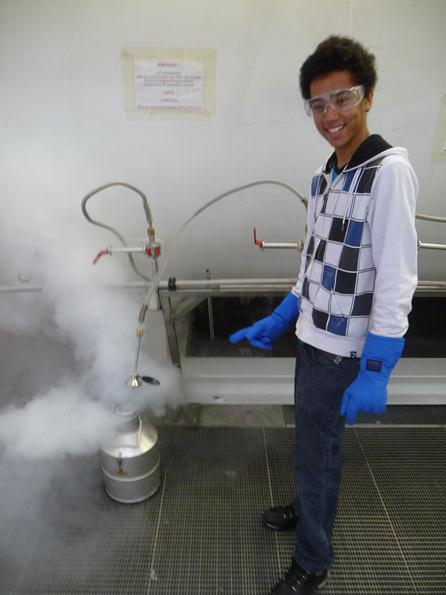
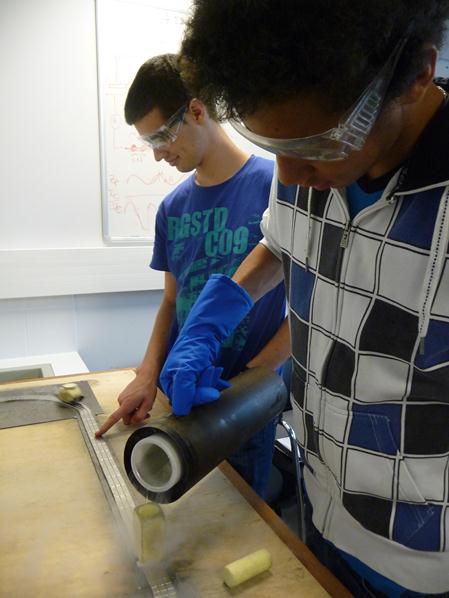
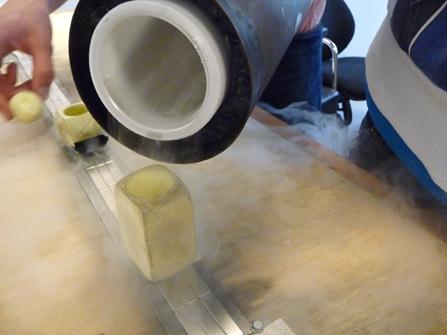
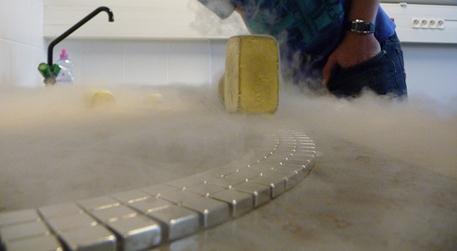
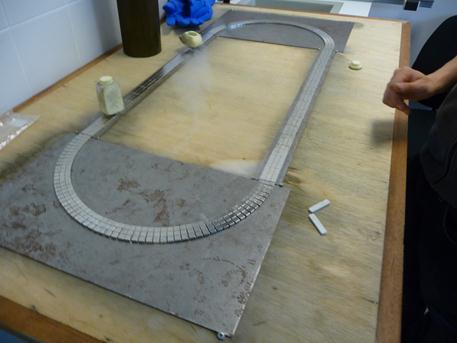
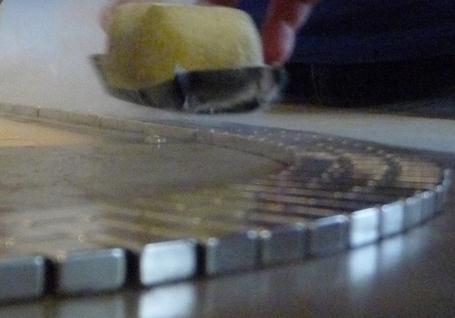
How does superconductivity works?
The electrons of the superconductor repulse the magnetic field of the magnets, which changes the properties of the sample. The field lines are deviated. When the superconductor is just above the magnets, the magnetic field increases, and the superconductor doesn't have enough electrons to repulse it. That's why vortexes are created by the electrons: the field lines pass through the superconductor.
This magnetic environment is conserved by the superconductor: there is a balance because changing this stable state costs energy.
There are different kinds of superconductors: low temperature superconductors (nearly 4K) and high temperature superconductors (nearly 90K), which can be manipulated easier, just by cooling them with liquid azote for instance.
The critical temperature is not the same with an isotope which has the same number of electrons but a different nucleus. A quantic phenomenon is responsible of superconductivity, and not only the electrons. The electrons, which can be considered as a wave, behave the same way.
The intensity measured by the STM is proportional to the conductivity, the capacity of materials to accept/give electrons. By measuring it thanks to tunnel spectroscopy, we can find tunnel conductance of the material, which enables us to know its electronic properties.
Then we visited the AFM (atomic force microscope) lab. It is constituted by a tip, and the forces between the tip and the surface are studied. The resolution is less important than the STM's one, but all the materials and not only conductors can be analyzed. It enables us to study the local mechanical properties and the conductivity for instance.
Comments
t'es super beau Damien !